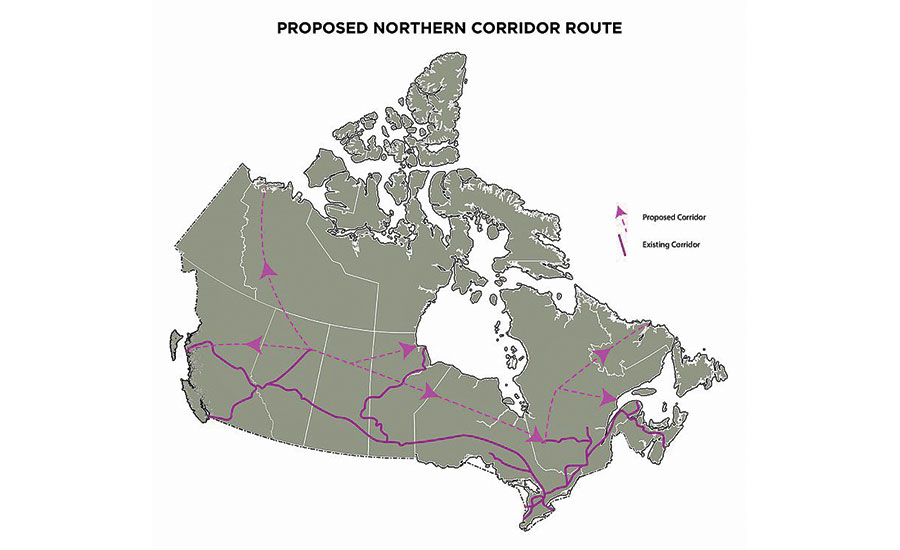Canadian engineers aim to push forward long-gestating plans for a new coast-to-coast infrastructure right-of-way that would open up Canada’s far-north territories, boosting access to resources in a challenged economy. They hope to convince government officials attending the Association of Consulting Engineering Cos.- Canada’s annual conference this month in Ottawa to expedite the multibillion-dollar “northern corridor” that has already has been touted in Canada’s parliament.
The infrastructure project would link the country’s far north with the rest of the country via a 4,349-mile-long, three-mile-wide corridor that could be used for roads, rail tracks pipelines and utility lines. The engineering group hopes to make the case for the ambitious project to Minister of Natural Resources James Carr and other government attendees.
The engineering group has been encouraged by the recent release of a senate report that endorsed the infrastructure corridor to link Canada’s remote parts with its more heavily populated southern tier. The senate Committee on Banking, Trade and Commerce’s report argues that the “visionary, future-oriented infrastructure initiative would give rise to significant economic opportunities for Canada.” It also seeks about $5 million in new funding for the University of Calgary School of Public Policy to boost planning research.
According to media reports, mining interests support the plan to boost access to sites such as the Gahcho Kue diamond mine in the Northwest Territories, opened last year by DeBeers Canada as the world’s largest new diamond mine in 13 years. Located 280 kilometers north of Yellowknife, it is exclusively fly-in, fly-out, with no road access. The aim would be to open up the Canadian north and its natural resources while connecting the communities there, some of which can’t be reached by road for part of the year, says ACEC-Canada President John Gamble. The idea was first proposed a half-century ago. Senate committee Chairman David Tkachuk in a statement noted that the corridor now “is the kind of infrastructure [Canada] will need to tap into new foreign markets.” The senate report pegs the cost at nearly $80 billion, with roadwork paid for by provincial governments and Ottawa; private entities would cover pipelines, utilities and some railways, according to a Canadian broadcast report..
Gamble sees the coordinated negotiation of interconnected infrastructure right-of-ways—a process that would involve extensive federal and local approvals and negotiations with First Nations peoples—as preferable to a more expensive, ad hoc approach now driven by individual projects. “It is more cost-effective for a Canadian mining company to open in South America,” Gamble points out. “Engineers left to their own devices want to do things right and to do them once. This lends itself to that.”




Post a comment to this article
Report Abusive Comment